:
The Pilbara
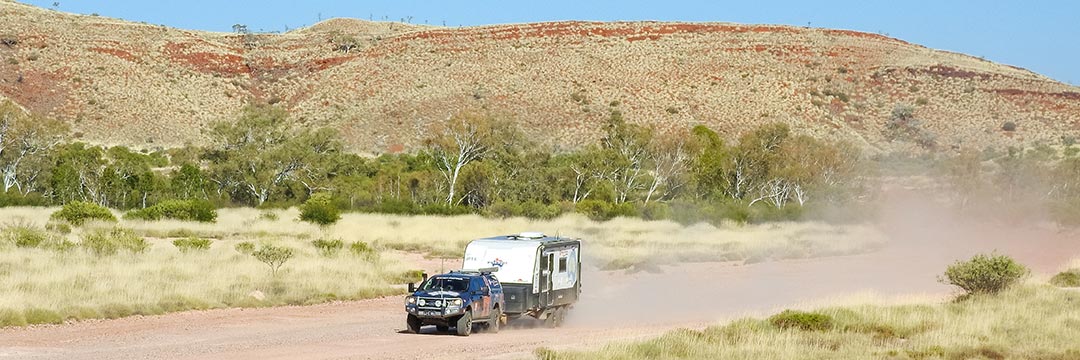 After exploring the Kimberley along the Gibb River Road, the Hema Nomad Explorers ventured south to find new landscapes and adventures between Broome and the Pilbara.
After exploring the Kimberley along the Gibb River Road, the Hema Nomad Explorers ventured south to find new landscapes and adventures between Broome and the Pilbara.
We were pleased to find no less than three high-season camping options in Broome that welcome pets, along with a permanent pet friendly park at Roebuck Plains. As we had a busy program planned in the township, we opted for the Pistol Club and were very comfortable in its well-shaded grounds. This was our first opportunity for shopping and maintenance so our two nights quickly passed, and I was pleased to find time for the night markets and sunset at Cable Beach.
Before heading south, we spent some time planning driving distances and stopovers for the next leg of the trip. We found the new routing feature in the Hema Explorer app perfect for this, as it was a real time saver over manual calculations as we compared different options. That night we found ourselves at Barn Hill Station for their 30th Anniversary dinner celebrations, which was a welcome surprise. With clifftop campsites, great beach and coastline, good facilities and even a bowling green I can’t imagine a better place to while away some lazy days.
From Barn Hill we headed into the Pilbara, choosing to take the route through Marble Bar to Newman first. Marble Bar has a great museum and many natural wonders, so we added this to our bucket list for a longer visit next time.
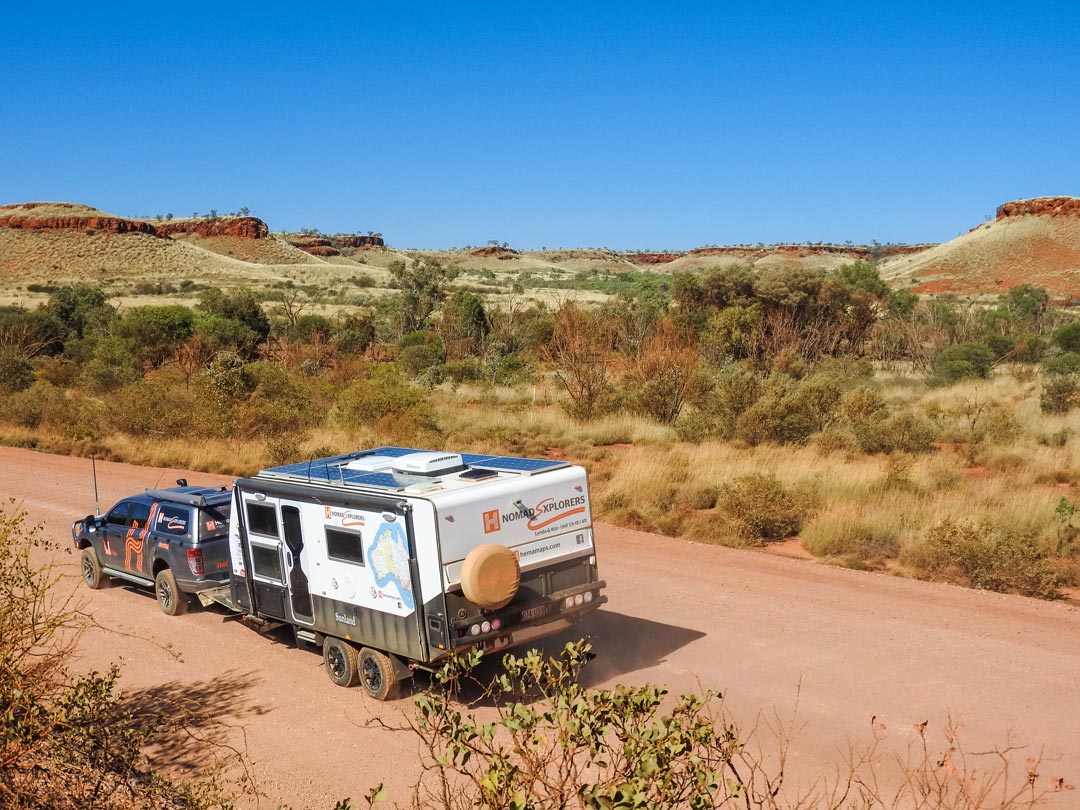 The road from Marble Bar to Newman is mostly unsealed and in varying condition, making for a drive that brought surprises around every corner. On this stretch of road, our Ford Ranger and Sunland Patriot van faithfully served us without any dust or unexpected trouble. Looking around, it’s obvious that this country is rich and vibrant, divulging a wealth of valuable iron ore while also being a favourite destination for gold prospectors. We are starting to appreciate ‘gold fever’ more as we travel, and I am sure that sooner or later we will be enticed into the game. For this year though, we were content to hear the stories and simply observe the ever-changing colours and textures that are the Pilbara.
The road from Marble Bar to Newman is mostly unsealed and in varying condition, making for a drive that brought surprises around every corner. On this stretch of road, our Ford Ranger and Sunland Patriot van faithfully served us without any dust or unexpected trouble. Looking around, it’s obvious that this country is rich and vibrant, divulging a wealth of valuable iron ore while also being a favourite destination for gold prospectors. We are starting to appreciate ‘gold fever’ more as we travel, and I am sure that sooner or later we will be enticed into the game. For this year though, we were content to hear the stories and simply observe the ever-changing colours and textures that are the Pilbara.
Our good friend Mark Keogh manages the ARB stockist store in Newman these days. His amazing family shared the local waterholes with us on a 4WD day trip, which we enjoyed immensely. When the opportunity arises to see a region through the eyes of a local, take it – you’ll no doubt find the experience is enriched enormously. Some of the highlights of our travel around the world have been guided by a local friend and this was no different. Who needs a swimming pool when natural swimming holes surround the town?
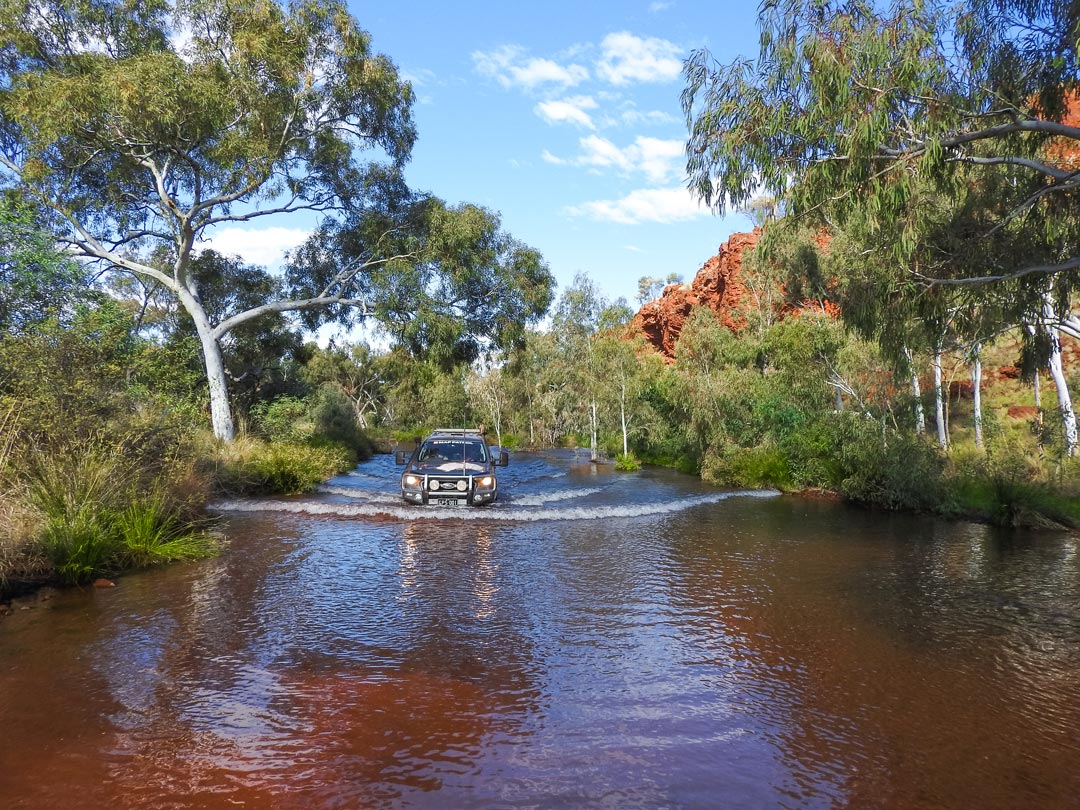 All too soon it was time to move on, with Karijini National Park our next destination. The majesty of the Pilbara continued to astound us, as in just one day we managed to walk one gorge and view several more from the easily accessed lookouts. The road between the information centre and the Karijini Eco Resort was somewhat corrugated and slow going in places, but most of the park can be accessed via bitumen almost all the way from either end, albeit a little further to drive that way.
All too soon it was time to move on, with Karijini National Park our next destination. The majesty of the Pilbara continued to astound us, as in just one day we managed to walk one gorge and view several more from the easily accessed lookouts. The road between the information centre and the Karijini Eco Resort was somewhat corrugated and slow going in places, but most of the park can be accessed via bitumen almost all the way from either end, albeit a little further to drive that way.
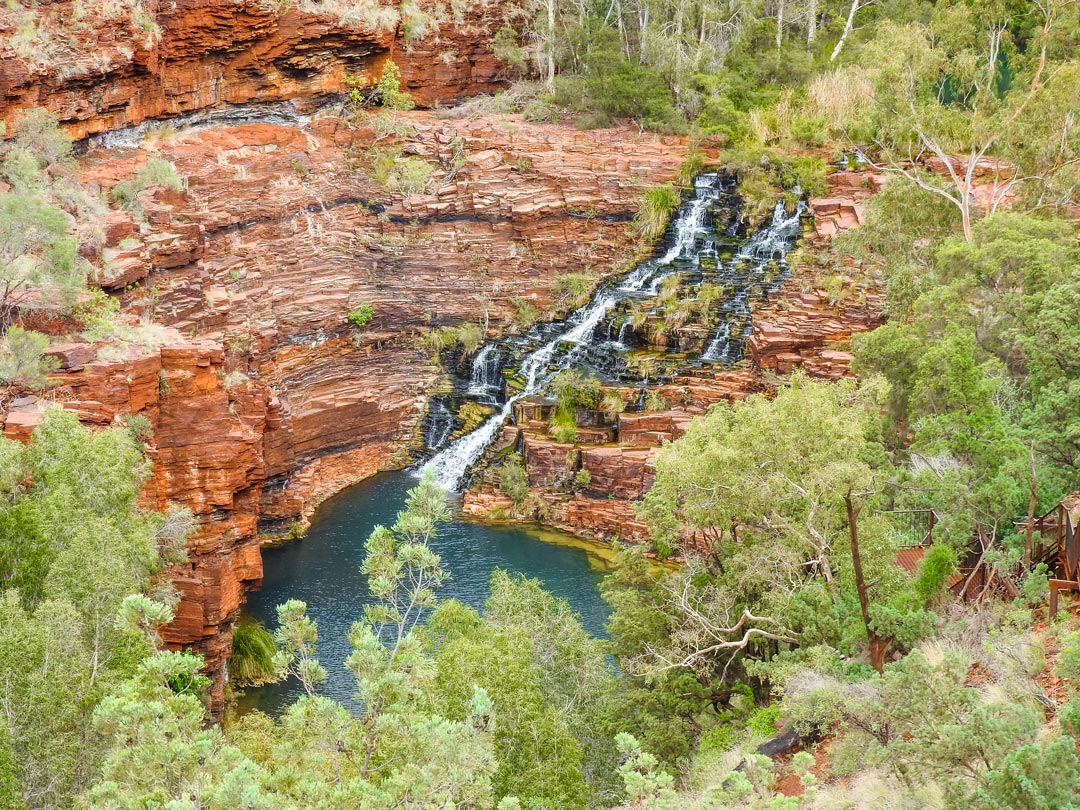 Each gorge is quite different, and most offer swimming holes for the brave and hardy. It was too cold for us on this occasion, but maybe next time! We would definitely recommend spending a few days here to really enjoy all the walks on offer, along with some of the most stunning sunset views imaginable. This year after high rainfall, the red hills are tinged with green; another example of why we never tire of travelling our unpredictable, ever-changing country.
Each gorge is quite different, and most offer swimming holes for the brave and hardy. It was too cold for us on this occasion, but maybe next time! We would definitely recommend spending a few days here to really enjoy all the walks on offer, along with some of the most stunning sunset views imaginable. This year after high rainfall, the red hills are tinged with green; another example of why we never tire of travelling our unpredictable, ever-changing country.
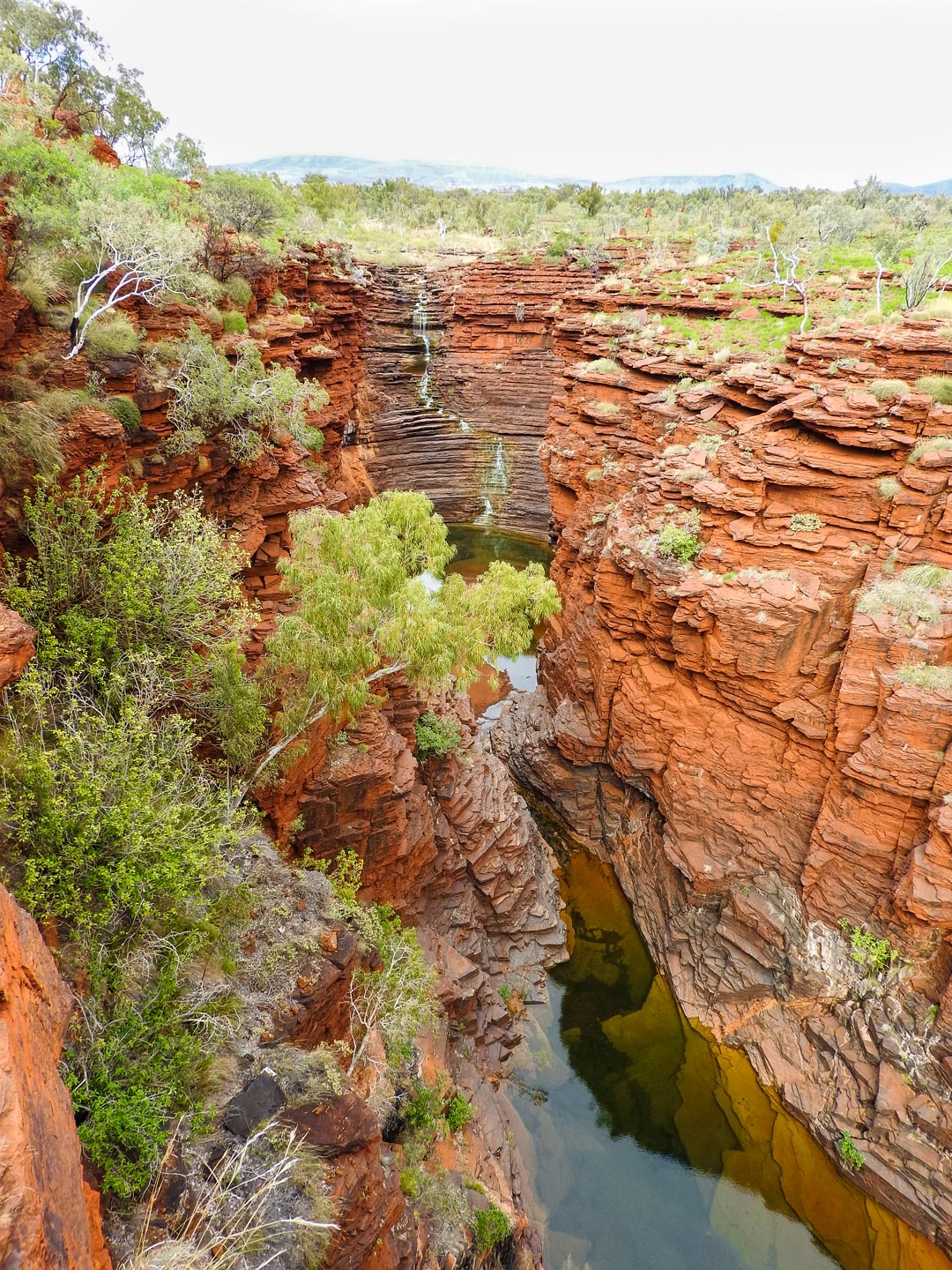
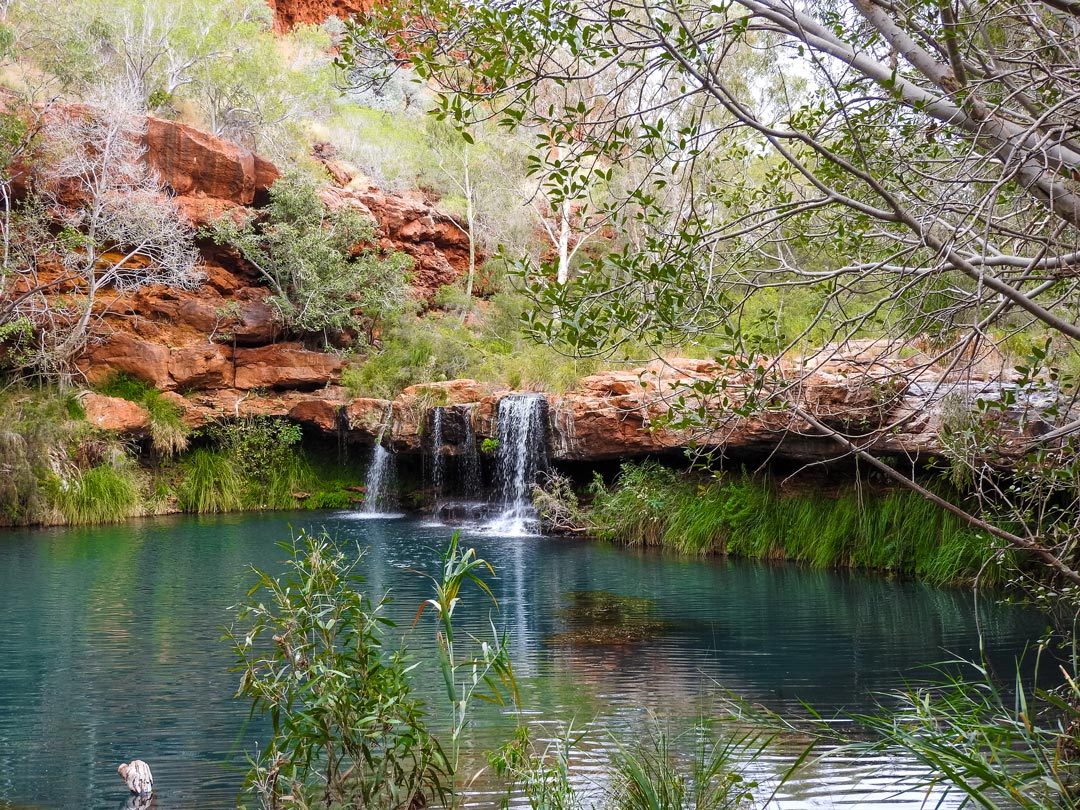 From Karijini we returned to the coast, where we soaked up the beauty of the turquoise water fringed by pure white sand. After weeks of red dirt, I could almost feel my soul reaching out to the sea. This section of coastline boasts countless campsites with everything from no facilities to full caravan park features, not to mention that much of the coastline is a fisherman’s paradise.
From Karijini we returned to the coast, where we soaked up the beauty of the turquoise water fringed by pure white sand. After weeks of red dirt, I could almost feel my soul reaching out to the sea. This section of coastline boasts countless campsites with everything from no facilities to full caravan park features, not to mention that much of the coastline is a fisherman’s paradise.
The region is well served by several coastal towns, which provide ports to transport the riches of the land. There is plenty of history too, from the early townships of Cossack and Wickham to ancient aboriginal petroglyphs at Burrup National Park. Mining areas offer excellent tours and interpretive centres (from iron ore to gas and salt), while around Exmouth we learned more about the WW2 stations and the listening post that operates today.
 Turning from the land to the sea, the jewel of the Coral Coast is undoubtedly the Ningaloo Reef. All the way from Coral Bay to Exmouth, the coastline is simply spectacular. Not only is the region home to the whale shark, but turtles also breed here, while humpback whales migrate through the area, meaning each season brings something different. After only three days in the region, our ‘to-do’ list for our next trip is much longer. Two weeks is the minimum I would allow for this region on a future visit.
Turning from the land to the sea, the jewel of the Coral Coast is undoubtedly the Ningaloo Reef. All the way from Coral Bay to Exmouth, the coastline is simply spectacular. Not only is the region home to the whale shark, but turtles also breed here, while humpback whales migrate through the area, meaning each season brings something different. After only three days in the region, our ‘to-do’ list for our next trip is much longer. Two weeks is the minimum I would allow for this region on a future visit.
As we prepare to leave the Pilbara, we agree that this region should be on everyone’s bucket list as a major destination; immediately after leaving the region it is back on ours. We are now headed to Monkey Mia and on to South West Western Australia now. While we are not looking forward to the cooler weather, I know we will have just as many tales to tell from the next leg of our journey.



0 comments